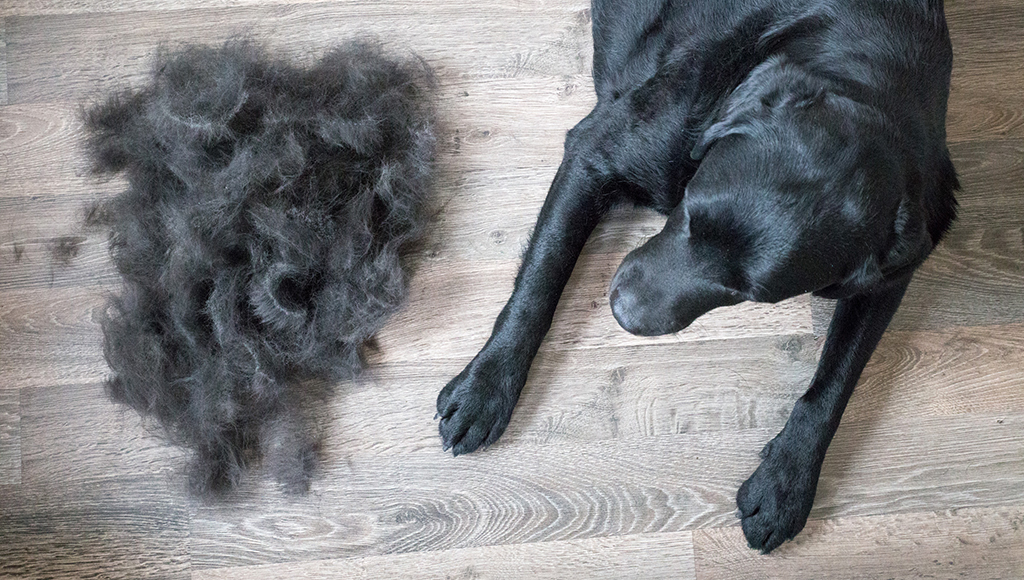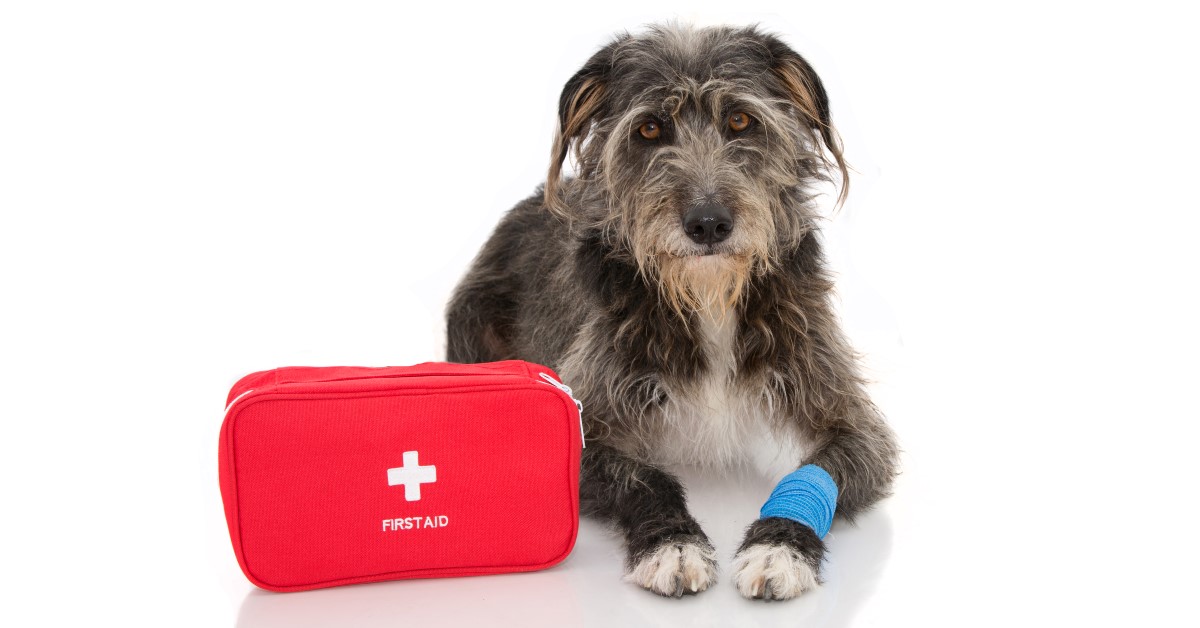Different Types of Pet Hair Loss - Part II
This information may help you better understand this condition.

There are many diseases and conditions that can cause a dog to lose hair. Some of these may be considered normal, while others can indicate that another condition or more serious disease may be present. Causes of hair loss can either be very common or very rare. This article will discuss the most common types of hair loss and their causes.
- Allergic Inhalant Contact Dermatitis - An allergic reaction following exposure
to antibiotics applied to the skin; metals such as nickel; materials such as
rubber, wool, and plastic; and chemicals such as dyes and carpet deodorizers;
or inflammation caused by irritating substances such as poison ivy. Generally
requires multiple exposures.
Symptoms: Red skin and small bumps or blisters on the areas of skin that are sparsely haired and directly exposed to the offending substance; itching; hair loss in chronic conditions.
Treatment: Restrict exposure to the allergen or contact irritant in the dog's environment; steroids, antihistamines.
- Atopy
- Allergic reaction to something the dog inhales such as pollen, house dust
mites, and mold.
Symptoms: Licking of feet, inflamed ears, itching, redness, and hair loss; sometimes development of infection or hot spots.
Treatment: Reduce exposure to allergen (what the dog is allergic to); steroids, fatty acid supplements, biotin, antihistamines, shampoos, immunotherapy.
- Callus
- Results from chronic pressure, especially in a large breed dog.
Symptoms: Thickened, hairless raised areas over bony pressure points such as elbows; may become secondarily infected.
Treatment: Provide softer bedding and padding around affected area.
- Cushing's Disease
(hyperadrenocorticism) - Caused by an increase in
corticosteroids in the body - due to either increased production by the body
or as a side effect of high doses or prolonged therapy with corticosteroids.
Symptoms: Hair loss, thinning of skin, hyperpigmentation, easy bruising, seborrhea, comedones (black heads), may see calcinosis cutis; lethargy, increased thirst and urination, potbellied appearance.
Treatment: If due to glandular tumors, selegiline, o,p-DDD (Mitotane), or surgical removal of tumor; if due to high steroid doses, slowly withdraw use of steroids.
- Demodectic Mange
- Infection with the Demodex mite – occurs when the immune system is
deficient.
Symptoms: Hair loss, scaliness, redness, pustules, ulcers, sometimes itching, darkening of the skin.
Treatment: NO steroids. Amitraz (Mitaban) dips.
- Folliculitis
- Infection of the hair follicles, often with staph bacteria; symptoms
usually appear on skin with less hair, such as the abdomen.
Symptoms: Pustules form in follicles and break open to form lesions which have crusty centers and appear as rings of scaly skin; may itch; short-coated breeds may develop small tufts of hair, which are lost; breeds with long coats may have seborrhea.
Treatment: Antibiotics for at least 4 weeks - continue antibiotics 10 days beyond the apparent cure; if recurs, look for underlying problem such as allergy or hormonal imbalance.
- Food Allergies
- Allergic reaction to something in the diet.
Symptoms: Licking of feet, inflamed ears, itching, redness, and hair loss; sometimes development of infection or hot spots.
Treatment: Change in diet.
Want to learn how to save on your pet's veterinary care? Click here - Hypothyroidism
- Decreased production of thyroid hormone; most common hormonal disease
affecting the skin in dogs.
Symptoms: Hair loss, dry and brittle hair, seborrhea; secondary bacterial and yeast infections; lethargy, obesity, slow heart rate; changes in skin pigmentation may occur.
Treatment: Lifetime thyroid supplementation.
- Malassezia
- Usually follows some other underlying disease.
Symptoms: Itching, redness, hair loss, greasy scales; if chronic, develops hyperpigmentation.
Treatment: Treat underlying disease; oral ketoconazole; miconazole shampoos.
- Ringworm
- Infection with several types of fungus.
Symptoms: Hair loss, scaliness, crusty areas, pustules, vesicles, some itching; can develop a draining nodule called a 'kerion' which is a skin leison that develops when an infectious agent that normally causes scalp ringworm (tinea capitis) becomes more aggressive.
Treatment: Miconazole, lime sulfur dips; oral griseofulvin or itraconazole.
- Sarcoptic Mange
- Infection with the Sarcoptes mite.
Symptoms: Intense itching and self-trauma, hair loss, papules (a solid, elevated area of the skin containing no visible fluid), crusts, and scales.
Treatment: Amitraz (Mitaban) dips (off-label use*); ivermectin (off-label use*).
- Seborrhea
- Can be primary (inherited) or secondary (resulting from other conditions
such as allergies, hypothyroidism).
Symptoms: Scales; depending upon the type, may have a dry or oily coat; odor; some scratching; may see hair loss.
Treatment: Treat underlying cause if present; antiseborrheic shampoos; fatty acid supplements.
- Tail Gland Hyperplasia
- Dogs have a sebaceous gland on the top of the tail near its base. In this
disorder, the gland enlarges; seen in unneutered dogs and secondary to other
diseases such as hypothyroidism.
Symptoms: Oily area, hair loss, crusts, and hyperpigmentation on area over gland.
Treatment: Castration may help; treat underlying cause; surgical removal.
Our next article in this series will discuss the less frequent causes of hair loss in dogs, their symptoms and treatments. Our final article will cover rare skin diseases. As with any condition that affects your pet, it is always best to consult with your veterinarian to get a thorough evaluation and proper diagnosis to provide the best treatment for your beloved pet.
Ready to start saving money on pet wellness care?
Then take a look at Mint Wellness, the pet wellness plan that provides fast reimbursement on routine pet care. Save on vaccinations, wellness exams, preventatives, dental, and more!
Learn More


